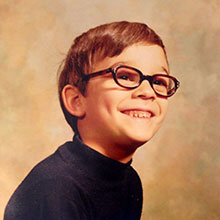
Geoff Dyer, one of my favorite writers (Yoga for People Who Can’t Be Bothered to Do It; White Sands) has returned to one of his favorite subjects, photography, which he last explored in The Ongoing Moment. Dyer’s new See/Saw (Graywolf Press), is a collection of brilliant, brief (most are fewer than five pages) essays. Dyer reacts to the work of dozens of photographers as if he’s nerding out with a friend (his prose makes you feel like a pal and a confidante, not a student). “I just look,” he writes in the introduction, “and then think about what I’m looking at, and then try to articulate what I’ve seen and thought, which encourages me to see things I hadn’t previously noticed, to have thoughts I hadn’t had before the writing began.” This pressure-free, open-minded approach dismantles the condescension of much art criticism and invites readers to feel comfortable and capable forming their own opinions and impressions. It’s a part of what Dyer, who has also published books about travel, literature, and jazz, refers to as “an ongoing project of self-funding education” on the subjects that most intrigue him. Whether reconsidering the works of a ubiquitous image-maker like Andy Warhol, or the in-your-face portraiture of queer contemporary photographer Zoe Strauss, Dyer brings fresh perspective to all he surveys. These casual essays zoom in on unasked questions and nudge readers to follow their own curiosity

With translation software getting better each year, it becomes less and less likely that you’ll find yourself unable to come up with the right words to communicate your basic needs when traveling abroad. Figuring out how to say “banister” in Italian or “chilly” in Mandarin or “gas station” in Norwegian is now a matter of typing into your ever-present digital device. But translating complicated emotions into any language remains a challenge; sometimes you just can’t find the words for how you feel. Enter John Koenig, author of The Dictionary of Obscure Sorrows(Simon & Schuster), a bewitching little book which takes notions that are dancing inarticulately through your brain and moves them to the tip of your tongue by offering new words with which to express them. What traveler can’t relate to neologisms like Koenig’s “volander. n. the ethereal feeling of looking down at the world through an airplane window, able to catch a glimpse of far-flung places you’d never see in person, free to let your mind meander, trying to imagine what they must feel like down on the ground—the closest you’ll ever get to an objective point of view” which he kluged together from volare, Latin for “to fly” and “solander,”a book shaped box used for holding maps. This strange little book hovers somewhere between poetry, philosophy, and comedian Rich Hall’s 1980s “Sniglets” routines. So are the words in this dictionary legit? That’s up to you, suggests Koenig “When the proper path is too difficult or ineffective to express an idea, when ‘self-portrait with a phone’ doesn’t seem to cover it anymore, someone will cut to the chase and blaze a new trail.”
